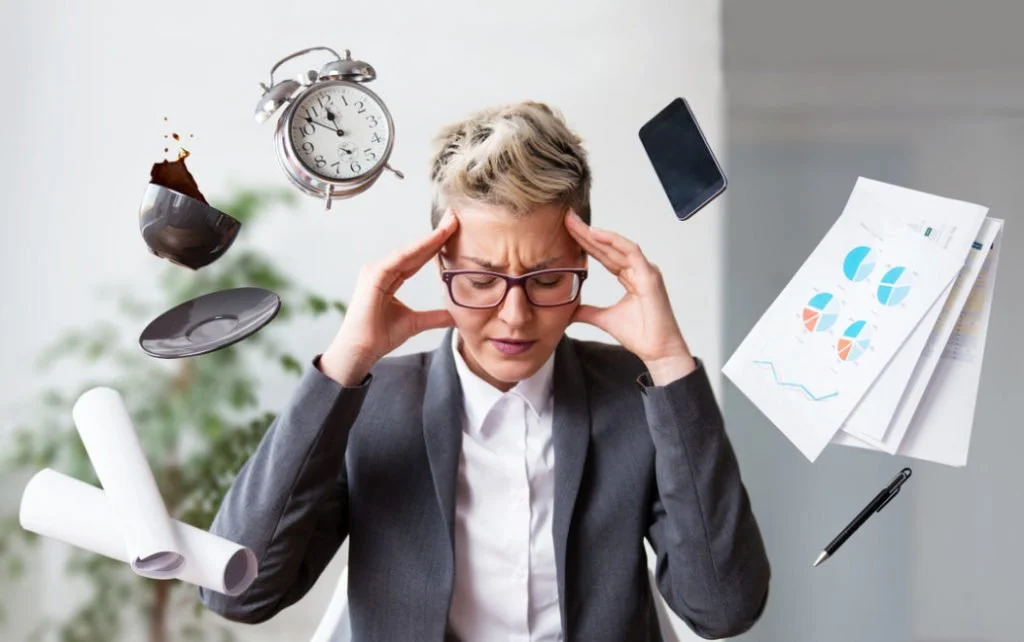I Think I Have ADHD: A Guide to Adult Symptoms, Diagnosis & Treatment
How Do I know if I have ADHD when I am adult and have made it through life this far without medication?
Have you ever wondered if your lifelong struggles with memory, focus, or relationships might actually stem from undiagnosed ADHD? You’re not alone — and you’re not imagining it. ADHD (also known as ADD) doesn’t disappear after childhood. In fact, research shows that about two-thirds of children with ADHD grow into adults who still experience symptoms.
Because our understanding of how ADHD presents — especially in women and in inattentive types — has evolved so much in recent decades, many adults are just now recognizing the signs in their 30s, 40s, 50s, and even 60s.
If this resonates with you, you're in the right place. These nine steps can help you move from confusion to clarity, with support every step of the way. At Total Clarity Psychiatry, I’ve spent over a decade helping adults understand their neurodivergent brains, explore effective treatment options, and embrace a new path forward — with compassion, not judgment.
Step 1: Recognize the Symptoms of Adult ADHD
The hyperactivity we often associate with ADHD tends to fade with age, but the challenges don’t. Instead, symptoms may show up as:
· Difficulty paying attention to details
· Trouble organizing/finishing large tasks
· Forgetfulness and frequent distractions
· Impulsivity or interrupting others
· Feeling overwhelmed in busy environments
Sadly, many adults with ADHD are first misdiagnosed with anxiety or mood disorders, missing the true underlying cause. If you see yourself in this list, it’s worth exploring further.
Step 2: Seek a Diagnosis from a Qualified ADHD Specialist
ADHD isn’t a behavioral issue — it’s a neurological condition that affects the brain’s executive function system. A proper diagnosis involves more than just checking a few boxes. Expect your provider to review the DSM-5 criteria and potentially recommend additional assessments, such as:
· Intelligence and cognitive tests
· Broad-spectrum symptom scales
· Computerized attention tasks
· In some cases, brain scans
The key is finding a professional who understands adult ADHD. As a psychiatric nurse practitioner, I specialize in diagnosing and treating ADHD across the lifespan — and I’m here to help.
Step 3: Rule Out Co-Occurring Conditions
Roughly 80% of adults with ADHD have at least one additional mental health condition. These comorbidities often include:
· Mood disorders
· Anxiety
· OCD
· Sleep disorders
· Sensory processing issues
In many cases, these secondary conditions are made worse by untreated ADHD. Addressing your attention challenges can make a significant impact across the board.
Step 4: Release the Shame and Guilt
Getting diagnosed later in life can bring both relief and grief. Relief that there’s finally an explanation. Grief over the years spent struggling without answers. Many adults carry deep-rooted shame about "failing" at things others seem to manage easily — missed appointments, lost items, forgotten birthdays.
Please hear this: it’s not a lack of discipline. It’s not laziness. ADHD is real — and treatable. Part of my mission as a provider is to help destigmatize this diagnosis and empower you to move forward with self-compassion.
Step 5: Build Your ADHD Treatment Team
There’s no one-size-fits-all approach to ADHD care. You might work with:
· Psychiatric Nurse Practitioners (like myself)
· Psychiatrists or neurologists
· Psychologists and therapists
· ADHD coaches
· Primary care providers
If you’re considering medication, you’ll need a prescriber. But you may also benefit from therapy, coaching, or skill-building support. Take your time to research and build a team that works for you.
Step 6: Understand ADHD Medications and Options
Navigating medication can feel overwhelming. Common questions include:
· What’s the difference between stimulants and non-stimulants?
· Will it affect my creativity or personality?
· What are the side effects?
· How long until I see results?
The good news: decades of research have made ADHD medications safer and more effective than ever. I provide clear, personalized guidance to help you understand your options and make informed decisions about your treatment.
Step 7: Explore Natural Support Strategies
While no diet or supplement can “cure” ADHD, certain lifestyle changes can support brain health and symptom management. These include:
· Eating more protein, healthy fats, and whole foods
· Reducing sugar and food additives
· Supplementing omega-3s, magnesium, zinc, and iron (if needed)
Natural supports aren’t a substitute for medical treatment, but they can be powerful allies. Let’s talk about what works best for your body and brain.
Step 8: Exercise Your Brain (and Body)
Movement is medicine — especially for ADHD brains. Regular exercise boosts dopamine and supports focus, memory, and mood. And it’s not just the gym: yoga, walking, mindfulness, and even brain-training apps can all help.
Ask me about building movement into your routine in a way that works for your life and goals.
Step 9: Use Technology to Stay on Track
From task management to sleep tracking, your phone can be your secret weapon. Helpful apps like:
· Listastic – to stay organized
· Sleep Cycle – for better rest
· Forest or Focus@Will – to improve attention
The right tools can make a world of difference in managing daily life.
You’re Not Broken — You’re Wired Differently
If you’ve read this far, chances are you see yourself reflected in some of these symptoms and steps. That’s not a diagnosis — but it is an invitation to get curious, ask questions, and start your journey toward clarity.
At Total Clarity Psychiatry, I specialize in working with adults who are navigating the complexities of late-diagnosed ADHD. Whether you’re seeking assessment, treatment, or just someone who gets it, I’m here for you.
Let’s rewrite your story — together.
Andrea Skrocki, MSN, PMHNP-BC
Psychiatric Mental Health Nurse Practitioner, Board Certified
Total Clarity Psychiatry
www.tcpsychiatry.com
231-495-0530

